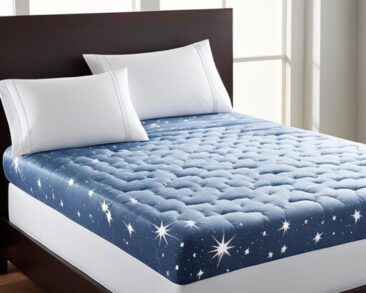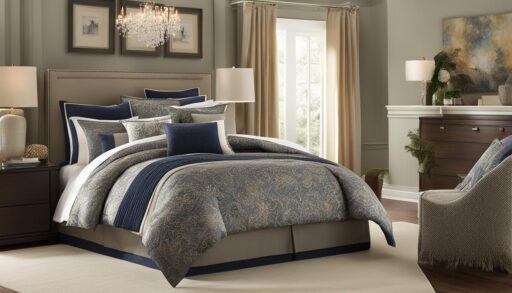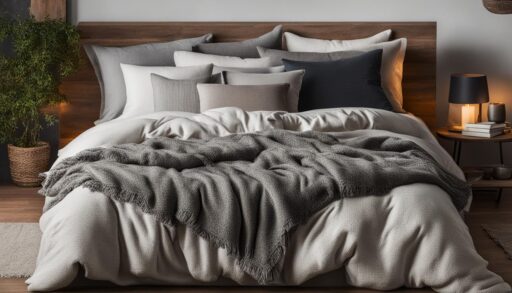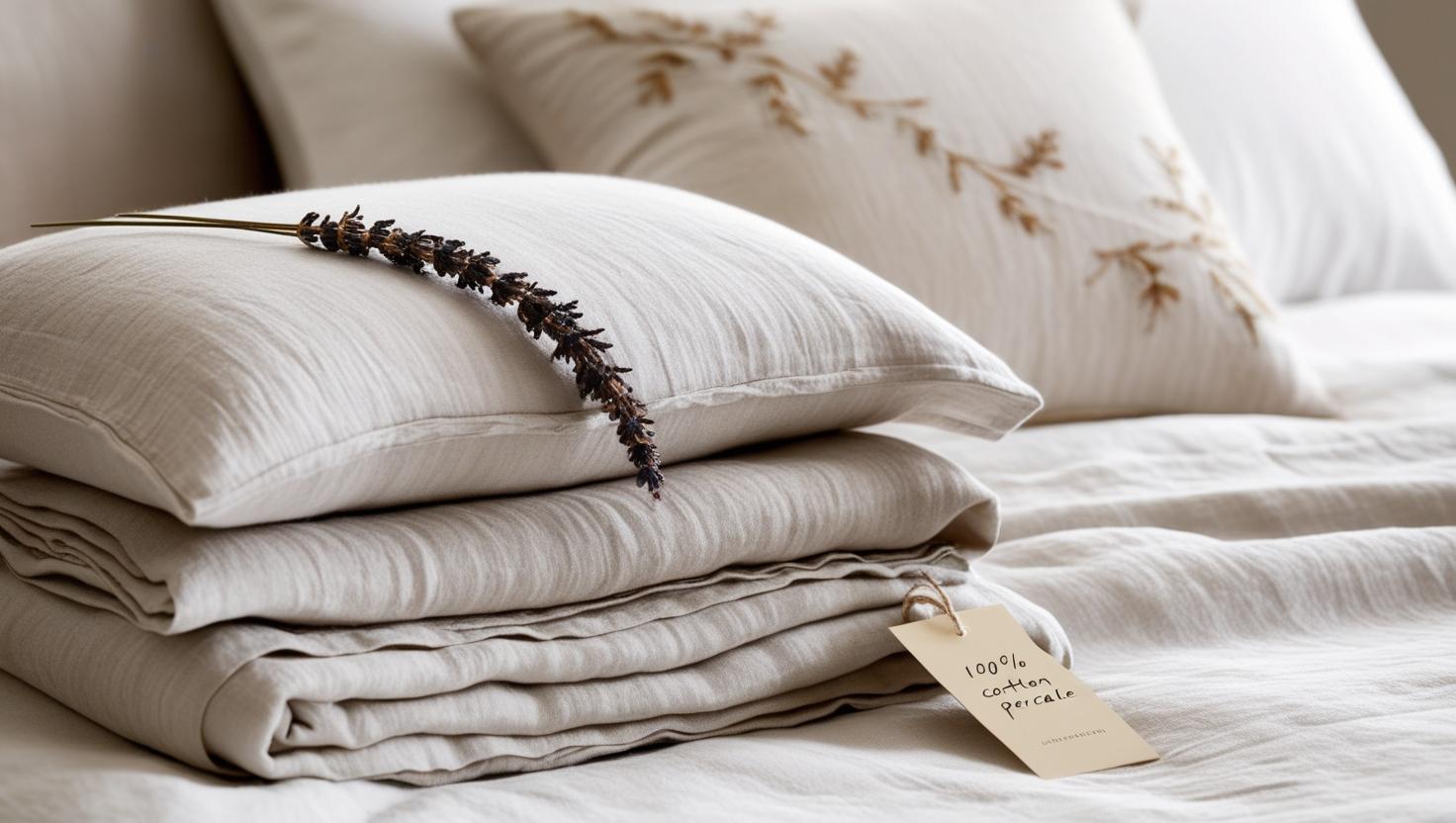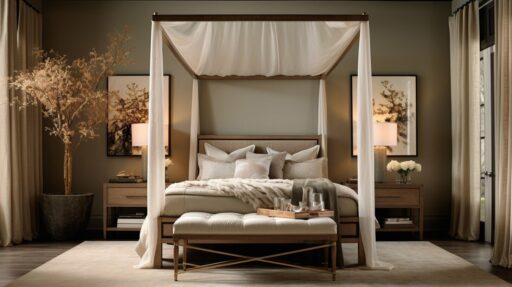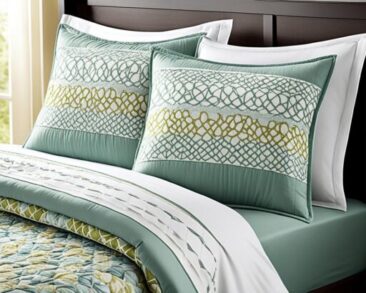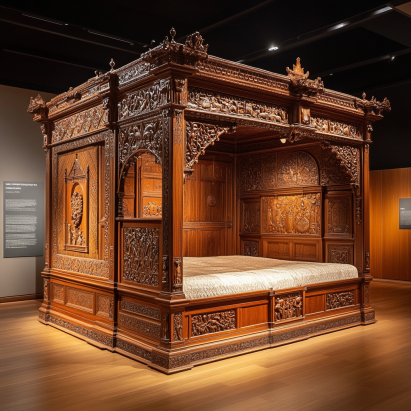Explore the world of Bedding Science to unlock better sleep. Discover the latest in sleep technology and mattress innovation for your best rest.
Continue readingEnhance Your Wellness: Uncover the Link Between Bedding and Health
How Bedding Affects Your Health: Tips for Better Sleep and Wellness
When it comes to your overall health and well-being, your sleep habits play a crucial role. But did you know that your bedding and health are closely connected? From your mattress to your pillows and sheets, the choices you make for your bedding can significantly impact the quality of your sleep and your overall health. The right bedding choices can ensure proper back alignment, pressure relief, temperature regulation, pain alleviation, and prevention of discomfort, nighttime awakenings, back pain, and headaches. So, how can you make sure your bedding and health are aligned to help you achieve optimal wellness?
Key Takeaways
- Choosing the right bedding can improve sleep quality and overall wellness.
- A medium-firm mattress with adjustable inflation is recommended for optimal sleep comfort.
- The right pillow can prevent neck pain and shoulder stiffness by promoting healthy spinal alignment.
- Sheets made of breathable fabrics like cotton and linen can help regulate body temperature during sleep.
- Weighted blankets have been shown to improve sleep quality and relaxation, positively impacting bedding and health.
The Importance of Sleep Hygiene for Better Health
Sleep hygiene refers to the routines and practices that promote healthy sleep. Good sleep hygiene is crucial for achieving quality sleep and reaping the benefits of restful nights. It includes setting a consistent sleep schedule, following a bedtime routine, creating a comfortable sleep environment, and forming healthy sleep habits.
Poor sleep hygiene can negatively impact sleep quantity and quality, leading to issues like poor focus, reduced cognition, delayed reactions, mood swings, and increased susceptibility to illness. Setting a fixed wake-up time, prioritizing sleep, making gradual adjustments to the sleep schedule, avoiding excessive napping, and winding down with relaxation techniques are all recommended strategies for improving sleep hygiene.
It’s also important to create a sleep-conducive bedroom environment by maintaining a comfortable temperature, blocking out light and noise, and investing in a quality mattress, pillows, and bedding. By incorporating these healthy sleep habits and focusing on the relationship between bedding and health, you can significantly improve your sleep quality and overall health.
Quote: “Sleep is the golden chain that ties health and our bodies together.” – Thomas Dekker
The Science Behind Sleep and Its Impact on Health
Sleep is a fascinating process that plays a crucial role in our overall health and well-being. Understanding the science behind sleep and its connection to bedding and health can help us make informed decisions about our sleep habits and create an optimal sleep environment. The sleep cycle consists of two main stages: REM (Rapid Eye Movement) sleep and NREM (Non-Rapid Eye Movement) sleep. Each stage has its own unique characteristics and functions, and the right bedding can enhance the quality of sleep in these stages.
The Sleep Cycle
The sleep cycle is made up of multiple cycles that last about 90-120 minutes. During NREM sleep, we go through three different stages: Stage 1, Stage 2, and Stage 3. In Stage 1, we experience a light sleep, and our brain waves start to slow down. In Stage 2, our brain waves continue to slow down, and our body temperature drops. Proper bedding, such as breathable sheets, can help regulate temperature during these stages, aligning with better bedding and health practices.
It is during Stage 3 that we enter deep sleep, also known as slow-wave sleep. This stage is essential for feeling refreshed and alert the next day. Using the right mattress and pillows can ensure proper spinal alignment and comfort, enhancing the restorative benefits of this stage.
REM sleep, on the other hand, is characterized by rapid eye movements, increased brain activity, and vivid dreaming. It plays a crucial role in memory consolidation and emotional processing. Throughout the night, we go through multiple cycles of NREM and REM sleep, with NREM sleep making up about 75-80% of the total sleep time. By investing in quality bedding, we can support the transitions between these stages, further connecting bedding and health to overall wellness.
The Importance of Healthy Sleep Duration
Adequate sleep duration is essential for our overall health. While individual sleep needs can vary, adults generally require at least 7 hours of sleep per night. Insufficient sleep can have negative effects on our physical and mental well-being. It can impair cognitive function, decrease focus and productivity, increase the risk of accidents, and weaken the immune system. Chronic sleep deprivation has also been linked to an increased risk of developing chronic conditions such as obesity, diabetes, and cardiovascular disease.
Ensuring quality sleep starts with prioritizing bedding and health. For example, a supportive mattress and the right pillow can alleviate discomfort and improve sleep duration. High-quality bedding materials, such as cotton or linen sheets, can help maintain an optimal sleep environment, ensuring better temperature regulation and comfort.
Getting enough high-quality sleep is essential for promoting optimal health and functioning. It is important to prioritize sleep and establish a consistent sleep schedule that allows for an adequate amount of rest each night. By understanding the science behind sleep, maintaining healthy habits, and recognizing the role of bedding and health, we can improve our overall well-being and lead a healthier lifestyle.

| Sleep Stage | Characteristics | Function |
|---|---|---|
| Stage 1 NREM | Light sleep, slow brain waves | Transition from wakefulness to sleep |
| Stage 2 NREM | Slower brain waves, decreased body temperature | Consolidation of memory and learning |
| Stage 3 NREM | Deep, slow-wave sleep | Restoration and physical recovery |
| REM Sleep | Rapid eye movements, increased brain activity | Memory consolidation and emotional processing |
Choosing the Right Mattress for Better Sleep Health
When it comes to improving your sleep quality and overall health, choosing the right mattress is crucial. Your mattress plays a significant role in promoting proper back alignment, pressure relief, temperature regulation, and pain alleviation during sleep. Investing in the right mattress is an essential step in aligning bedding and health for optimal wellness.
Firstly, it’s important to note that a systematic review of controlled trials found that a medium-firm mattress with adjustable inflation tends to be best for sleep comfort and quality. However, the ideal mattress is subjective and depends on individual preferences. Consider factors such as body type, sleeping style, and surface firmness preference when selecting a mattress to ensure both comfort and better bedding and health outcomes.
Additionally, it’s essential to consider potential allergens. If you have allergies, opt for a hypoallergenic mattress that is resistant to dust mites and mold. Hypoallergenic materials like latex or memory foam are better for maintaining both bedding and health, as they reduce the risk of allergen buildup and improve sleep quality.
Factors to Consider When Buying a Mattress
- Body Type: Different body types require different levels of support. Take into account your weight and body shape when choosing a mattress.
- Sleeping Position: Whether you sleep on your back, side, or stomach, the mattress should provide adequate support and alignment for your spine to enhance bedding and health benefits.
- Material: Consider the materials used in the mattress, such as memory foam, latex, or innerspring. Each material has its own benefits and drawbacks, so choose one that supports your overall health and comfort.
- Edge Support: If you tend to sleep close to the edge of the bed, look for a mattress with reinforced edges to prevent sagging.
- Motion Isolation: If you sleep with a partner, a mattress with good motion isolation can minimize disruptions when one person moves.
- Temperature Regulation: Some mattresses are designed to regulate body temperature and keep you cool during sleep. Features like gel-infused foam or breathable materials can support better bedding and health by preventing overheating.
By considering these factors and investing in a high-quality mattress that suits your individual needs, you can significantly improve your sleep health, demonstrating the critical link between bedding and health and overall well-being.
The Impact of Pillows on Sleep and Neck Health
The right pillow is crucial for promoting healthy sleep and preventing neck pain and shoulder stiffness. A good pillow supports the head and neck and ensures healthy spinal alignment during sleep. By choosing a pillow that aligns with your sleep habits, you can reinforce the connection between bedding and health for better rest.
When selecting a pillow, consider factors such as pillow height, firmness, and material. Personal preference, sleep position, and neck health should all be taken into account when choosing a pillow that promotes optimal sleep and neck comfort. Memory foam, down, and latex are common options that cater to different needs while maintaining a focus on bedding and health.
Bedsheets and Sleepwear: Influence on Sleep Comfort and Regulation
When it comes to getting a good night’s sleep, the right bedsheets and sleepwear can make all the difference. Choosing breathable fabrics like cotton and linen helps regulate body temperature, enhancing both sleep comfort and the link between bedding and health.
Cotton and linen sheets are popular choices for their breathability and softness. These natural fibers promote airflow and prevent overheating, essential factors for maintaining good bedding and health.
Seasonal Bedding Choices:
- Winter: Flannel sheets offer extra warmth and insulation.
- Summer: Lightweight, moisture-wicking materials like bamboo or cotton blends keep you cool and sweat-free.
Sleepwear also plays a role in maintaining optimal sleep comfort. Opt for breathable fabrics like cotton or bamboo, and choose loose-fitting designs to ensure airflow and freedom of movement, further reinforcing the importance of bedding and health in achieving restful nights.

| Season | Bedsheets | Sleepwear |
|---|---|---|
| Summer | Cotton or linen sheets | Lightweight cotton or bamboo sleepwear |
| Winter | Flannel sheets | Warm and cozy sleepwear |
| All seasons | Cotton or bamboo-blend sheets | Loose-fitting and breathable sleepwear |
By choosing bedding and sleepwear made from breathable fabrics like cotton and linen, and adjusting your choices according to seasonal needs, you can create a sleep environment that promotes optimal comfort and temperature regulation. Remember, a restful night’s sleep starts with the right bedding and sleepwear choices.
The Impact of Weighted Blankets on Sleep Quality
Weighted blankets have gained recognition for their ability to improve sleep quality and promote relaxation. Research suggests that the added weight and pressure of these blankets can have various benefits, enhancing both the time it takes to fall asleep and the depth of sleep achieved. They have been found to provide a sense of comfort and security, helping individuals feel more relaxed and at ease during the night.
“Sleeping with a weighted blanket has made a noticeable difference in my sleep quality,” says Lisa, a satisfied user.
I feel more calm and find it easier to unwind after a long day. The gentle pressure of the blanket helps me feel grounded and promotes a restful sleep.”
Weighted blankets work by applying a type of deep pressure touch stimulation, similar to the feeling of a comforting hug or cuddle. This sensation triggers the release of serotonin, a hormone that contributes to relaxation and a sense of well-being. Additionally, they can help reduce anxiety and improve overall sleep satisfaction.
Weighted blankets come in various weights and sizes to accommodate different preferences and body types. It is recommended to choose a blanket that is approximately 10% of your body weight for optimal comfort and effectiveness. However, it’s essential to consult with a healthcare professional, as weighted blankets may not be suitable for everyone, especially those with certain medical conditions or children under a certain age.
| Benefits of Weighted Blankets |
|---|
| Promotes deeper and more restful sleep |
| Reduces anxiety and stress |
| Enhances relaxation and calmness |
| Improves sleep quality for individuals with sensory processing disorders |
| Provides a feeling of comfort and security |
If you’re interested in incorporating a weighted blanket into your sleep routine, it’s important to choose a high-quality, well-constructed blanket that suits your individual needs. Look for blankets that are made with breathable fabrics and evenly distributed weight to ensure optimal comfort and safety. Always follow the manufacturer’s guidelines for proper use and maintenance of your weighted blanket.

Remember, while weighted blankets can be beneficial for many individuals, sleep quality and comfort are highly personal. It’s essential to experiment and find what works best for you. If you’re unsure about whether a weighted blanket is suitable for your specific needs or have any concerns, it’s always best to consult with a healthcare professional or sleep specialist.
Maintaining Clean and Allergen-Free Bedding for Better Sleep Health
Proper cleaning and maintenance of your bedding is crucial for creating a restful sleep space and preventing allergens from accumulating. Regular washing of bedsheets, pillows, and blankets is essential for reducing dust mites and allergens that can worsen congestion and allergies. To keep your bedding fresh and clean:
- Wash your bedsheets at least once a week in hot water to kill dust mites and remove any built-up oils or sweat.
- When washing pillows, check the care instructions and wash them on a high heat setting to ensure thorough cleaning and elimination of mites.
- Consider using hypoallergenic pillow protectors to provide an extra layer of defense against allergens.
- Regularly clean your mattress by vacuuming it and using a mattress protector to prevent allergens from settling in.
In addition to regular washing, it’s important to maintain a restful sleep space by keeping your bedroom clean and free from dust and clutter. Dust and vacuum regularly, especially in areas where dust tends to accumulate, such as under the bed and in corners. Use allergen-proof covers for your mattress and pillows to create a barrier against dust mites and other allergens.
“Maintaining a clean and allergen-free sleep environment is crucial for promoting better sleep and overall health.”
By taking these simple steps to clean and maintain your bedding, you can create a healthier sleep environment and promote better sleep quality. Remember, a clean and allergen-free sleep space contributes to your overall well-being and enhances the benefits of a good night’s sleep.
Conclusion
In conclusion, prioritizing healthy sleep habits and creating an optimal sleep environment are key to enhancing overall wellness and promoting better sleep health. Your bedding plays a crucial role in ensuring restful nights and preventing discomfort, pain, and sleep disturbances. By choosing the right mattress, pillows, and sheets, you can significantly improve sleep comfort and temperature regulation. Incorporating weighted blankets and maintaining clean bedding are additional steps you can take to enhance sleep quality.
Remember to practice good sleep hygiene, such as setting a consistent sleep schedule, following a bedtime routine, and creating a sleep-conducive bedroom environment. These practices, along with investing in high-quality bedding, can unlock the link between bedding and wellness, leading to improved overall health and a healthier lifestyle.
By prioritizing healthy sleep habits, maintaining an optimal sleep environment, and choosing the right bedding for your needs, you can achieve better sleep quality and enjoy the numerous benefits of restful nights. Take the necessary steps to prioritize your sleep and create a space that promotes relaxation and rejuvenation. Your body and mind will thank you for it.
FAQ
What role does bedding play in promoting overall health?
Healthy sleep habits, including the use of the right bedding, can significantly impact the quality of sleep and overall health. The right bedding can ensure proper back alignment, pressure relief, temperature regulation, pain alleviation, and prevention of discomfort and sleep disturbances.
What type of mattress is recommended for optimal sleep comfort?
It is recommended to choose a medium-firm mattress with adjustable inflation for optimal sleep comfort and quality. However, the ideal mattress depends on personal preference and factors such as sleep position, surface firmness preference, and temperature regulation.
How important is the pillow for sleep and neck health?
The right pillow is crucial for promoting healthy sleep and preventing neck pain and shoulder stiffness. A good pillow supports the head and neck and ensures healthy spinal alignment. Choosing the right pillow can significantly impact sleep quality and neck health.
What bedding materials are best for temperature regulation during sleep?
Bedsheets made of breathable fabrics like cotton and linen can help regulate body temperature and prevent overheating during sleep. Fabric choice depends on personal preference and can vary with seasonal temperatures. Cotton and bamboo bedding usually provide a good balance of warmth and breathability.
What is the impact of weighted blankets on sleep quality?
Weighted blankets have been shown to improve sleep quality and relaxation. They can help reduce the time it takes to fall asleep, promote deeper sleep, and enhance overall relaxation during the day. While more research is needed, weighted blankets are worth considering for better sleep quality.
How important is cleaning and maintaining bedding for sleep health?
Regular cleaning of bedding, including pillows, sheets, and blankets, is essential for maintaining a restful sleep space and preventing allergens from accumulating. Washing and drying pillows on high heat can help kill dust mites. Regular cleaning and maintenance of bedding can contribute to better sleep health and prevent the build-up of allergens.
Bedding and Health
- Sleep Foundation: www.sleepfoundation.org
- Healthline: www.healthline.com
- The Wool Room: www.thewoolroom.com
Source Links
Unlock the Secret: What is a Sham Bedding?
Are you looking to enhance the look of your bed and add a touch of style? Enter sham bedding – the decorative accessory that can transform your bed into a cozy and inviting oasis. But what exactly is a sham bedding and how does it differ from a regular pillowcase? Let’s dive in and uncover the secret!
Key Takeaways
- Sham bedding is a decorative accessory used to enhance the look of a bed.
- Unlike pillowcases, shams have hidden openings at the back and come in various designs and edge styles.
- Sham bedding is an important component of bed styling, creating a layered and inviting look.
What Is a Sham Bedding?
According to Wikipedia, as of 2024, a bed sham or pillow sham is a decorative covering for a pillow, designed not primarily for sleeping but for visual appeal. It typically features an envelope-style opening in the back and may have flange or trim around the edges for a stylish finish.
Unlike standard pillowcases, which prioritize comfort and hygiene, shams focus on aesthetic enhancement. They’re often placed in front of or behind the sleeping pillows to complete the layered bed look.
The Importance of Bed Layering
When it comes to styling your bed, layering is key to creating a visually appealing and comfortable ensemble. Each layer adds its own unique touch and contributes to the overall design and functionality of the bed. Let’s explore the different elements of bed layering, from sheets to duvet covers, and discover how they can transform your sleeping space.
| Layer | Description |
|---|---|
| Bed Sheets | Choose from cotton, percale, sateen, bamboo, or silk sheets to create a soft and luxurious foundation for your bed. |
| Blankets | Add warmth and texture with blankets made from soft cotton or cozy woven knits. |
| Coverlets | Transitional layers between the flat sheet and duvet cover, coverlets come in different weaves and finishes to complement your bed ensemble. |
| Duvet Covers | Protect and decorate your duvet insert with stylish covers available in various materials and designs. |
By layering these elements correctly, you can achieve a well-coordinated and inviting bed. Consider the colors, patterns, and textures of each layer to create a cohesive look. Additionally, don’t forget about the importance of bed skirts or dust ruffles, which add a finishing touch to the overall ensemble.
Creating a visually appealing and comfortable bed is all about finding the right balance. Take the time to experiment with different combinations of layers, and don’t be afraid to mix and match colors and patterns. With proper bed layering, you can transform your bedroom into a cozy and stylish sanctuary.
Understanding Different Types of Pillow Edgings
When it comes to bed styling, the details matter. The type of pillow edging you choose can make a significant difference in the overall look and feel of your bed. There are four main types of pillow edgings to consider: knife edge, flange edge, welted edge, and scalloped edge.
Knife Edge Pillow
A knife edge pillow is the simplest and cleanest option. It has a seam without any decorative finishes, creating a sleek and minimalist look. This type of edging is perfect for those who prefer a more understated style and want the focus to be on the fabric or pattern of the pillow itself.
Flange Edge Pillow
For those who like a touch of elegance and flair, a flange edge pillow is an excellent choice. It features a fabric accent added along all four sides of the pillow, creating a decorative flourish. This decorative border can be made from the same fabric as the pillow or a contrasting one, adding visual interest to the bed.
Welted Edge Pillow
If you’re looking for a more textured and finished look, consider a welted edge pillow. This type of edging features a decorative border or trim, such as piping or braiding. The added texture and detail can elevate the overall aesthetic of your bed, adding a touch of sophistication and style.
Scalloped Edge Pillow
For a timeless and stylish look, a scalloped edge pillow is an excellent choice. This type of pillow has a flange that is then finished in a scallop shell shape, creating a unique and eye-catching design. Scalloped edge pillows add a touch of elegance and charm to any bed ensemble.
When selecting pillow edgings, consider the overall style and theme of your bedroom. Choose an option that complements the other elements in your bed styling and enhances the overall aesthetic. Whether you prefer a minimalistic look or want to add decorative flair, the right pillow edgings can make a significant impact on the overall appearance of your bed.
Styling Tips for Shams and Throw Pillows
When it comes to bed styling, throw blankets, shams, and decorative pillows are your secret weapons for creating a visually stunning and inviting space. These accessories not only add color, texture, and warmth to your bed but also allow you to showcase your personal style and creativity. Follow these styling tips to achieve a beautifully curated bed ensemble that will make you excited to curl up and relax:
Layer with Throw Blankets
Throw blankets are an excellent addition to your bed styling arsenal. They not only provide extra warmth but also add a cozy and luxurious feel to your bed. Choose throw blankets in colors, patterns, and textures that complement your overall bed ensemble. Drape them casually over the foot of your bed or neatly fold them and place them at the edge of your pillows for an effortlessly stylish look.
Create Pillow Arrangements
Pillows are the stars of bed styling, and there are endless possibilities when it comes to arranging them. Start with Euro pillows in the back, which provide a solid base and support for your decorative pillows. Layer standard-sized shams and decorative pillows in various shapes, sizes, and patterns in front of the Euro pillows. Mix and match different pillow covers to add depth and visual interest to your bed. Don’t be afraid to experiment with different combinations until you find the perfect arrangement that reflects your style.
Balance Style and Comfort
While it’s tempting to go all out with decorative pillows and shams, it’s important to strike a balance between style and comfort. Having too many pillows can make your bed feel cluttered and overwhelming. Keep in mind that pillows are meant to support your head and neck, so prioritize comfort when choosing the number and size of pillows. Select pillows that provide the right level of firmness and support for a restful night’s sleep.
By incorporating throw blankets, shams, and decorative pillows into your bed styling, you can transform your bedroom into a cozy and visually appealing sanctuary. Experiment with different colors, patterns, and textures to create a bed ensemble that reflects your personal style and makes you excited to retreat into each night.
The Versatility of Dohars
Dohars, traditional blankets or quilts, are a versatile addition to your bed styling. These heritage pieces not only provide warmth and comfort but also showcase the rich cultural history behind them. Dohars come in a variety of materials, including cotton, flannel, microfiber, and polyester, offering options to suit different preferences and climates.
When layering your bed, consider incorporating a Dohar as an additional element. Its unique patterns, designs, and colors can add a touch of ethnicity and uniqueness to your bedroom decor. Whether you prefer a traditional, intricately woven Dohar or a modern, vibrant printed one, this bedding accessory will undoubtedly make a statement.
To fully appreciate the charm and versatility of Dohars, here is a table highlighting some of their key features:
| Key Features | Benefits |
|---|---|
| Traditional Designs | Brings a sense of heritage and culture to your bedroom |
| Various Materials | Allows you to choose the right fabric for your preferences and climate |
| Wide Range of Patterns | Offers options for different styles and aesthetics |
| Enhances Layering | Provides an additional layer for added warmth and style |
With their rich history and decorative appeal, Dohars are a must-have for anyone looking to create a layered and culturally-inspired bed ensemble.

The Charm of Cushions
When it comes to adding a touch of casual elegance to your bed, cushions are the perfect choice. These fluffy accessories not only provide extra comfort but also serve as stylish accents that can enhance the overall look and feel of your bedroom. Whether you prefer a classic or modern design, cushions come in various shapes, sizes, and colors, allowing you to create a personalized pillow styling that suits your taste.
Placing cushions strategically on your bed can create a visually appealing arrangement. You can choose round, rectangular, diamond-shaped, or square cushions to add variety and interest to your bed ensemble. Consider using contrasting colors or patterns to make your cushions stand out, or opt for subtle tones that complement your existing bedding accessories.
Cushions also offer a cozy and inviting feel to your bed. They can be placed on top of your pillows for added comfort while reading or watching TV. By layering different cushion sizes, you can create a luxurious and inviting look that exudes casual elegance. Just be sure not to overdo it – prioritize comfort over style and find a balance that suits your preferences.
“Cushions provide a cozy and comfortable feel to the bed and can be placed strategically to create a visually appealing arrangement.”
To showcase the charm of cushions, let’s take a look at a table that highlights different cushion shapes, sizes, and styles:
| Cushion Shape | Size | Style |
|---|---|---|
| Round | 16 inches | Classic floral |
| Rectangular | 12 x 20 inches | Modern geometric |
| Diamond-shaped | 18 inches | Velvet texture |
| Square | 20 x 20 inches | Embroidered details |
With the versatility and charm of cushions, you can easily transform your bed into a cozy and stylish sanctuary. Whether you prefer a minimalist look or a vibrant display of colors and textures, cushions are sure to add that extra touch of comfort and elegance to your bedroom.
Bedspreads for Elegance
When it comes to creating an elegant and stylish bed, bedspreads are an essential element. These versatile bedding accessories not only add a layer of comfort but also elevate the overall aesthetic of your bedroom. By choosing the right bedspread, you can create a beautifully layered bed that stands out and complements your bedroom decor.
One of the key factors to consider when selecting a bedspread is the concept of contrasting colors. Opting for a bedspread in a contrasting color to your bedsheet palette can create a visually striking effect. For example, if your bedsheets are in neutral tones like white or beige, consider choosing a bedspread in a bold and vibrant color like deep blue or rich burgundy. This contrast will add depth and visual interest to your bed ensemble.
Another aspect to keep in mind is how the bedspread fits within the overall bedroom decor. It should complement the theme or style of your room, whether it’s modern, traditional, or eclectic. For instance, if you have a minimalist bedroom with clean lines and neutral tones, a bedspread with a simple and understated design will enhance the overall aesthetic. On the other hand, if your bedroom features a bohemian or vintage-inspired decor, you can opt for a bedspread with intricate patterns or embroidery to add a touch of charm and personality.
| Contrasting Color Schemes | Complementary Bedroom Decor |
|---|---|
| A bedspread in a bold color like deep blue or rich burgudy contrasts beautifully with neutral bedsheets. | A minimalist bedroom with clean lines and neutral tones pairs well with a simple and understated bedspread. |
| A bedspread in a vibrant green or sunny yellow adds a pop of color to a white or beige bed ensemble. | A bohemian or vintage-inspired bedroom can be enhanced with a bedspread featuring intricate patterns or embroidery. |
By carefully selecting a bedspread that complements your bedroom decor and incorporates contrasting colors, you can create a visually stunning and sophisticated bed. Remember to consider the overall theme and style of your room, and choose a bedspread that adds elegance and personality to your sleeping space.

Incorporating pillow shams into your bed styling routine is a simple yet effective way to elevate the look and feel of your bedroom. So why not unleash the magic of pillow shams and discover a new level of style and comfort for your sleep sanctuary?
Conclusion
Now that you’ve learned about bed styling tips and the role of bed accessories, you can create a perfect combination of comfort and style in your bedroom. By incorporating sham bedding and layering different elements like sheets, blankets, coverlets, and duvet covers, you can achieve a visually appealing and inviting bed ensemble.
Don’t forget the importance of pillow edgings and the versatility of throw blankets in adding pops of color and warmth to your bed. Strategically placing cushions can provide both coziness and aesthetic charm. Additionally, bedspreads and pillow shams offer elegance and customization to your space.
Remember to prioritize your comfort while creating the stylish bed of your dreams. Experiment with different patterns, colors, and designs to reflect your personal style and enhance the overall ambiance of your bedroom. With these bed styling tips and a variety of bed accessories, you can transform your bed into a cozy haven that combines both comfort and style.
Looking to master the art of bedding? Visit Cozy Bed Quarters for more expert guides and home styling tips.
FAQ
What is a sham bedding?
Sham bedding is a decorative accessory used to enhance the look of a bed. It is a layer placed on top of standard sleeping pillows, adding color and style to the bed.
What are the different elements of bed layering?
The different elements of bed layering include selecting the right bed sheets, blankets, coverlets, duvet covers, and bed skirts or dust ruffles. These elements create a visually appealing and comfortable bed.
What are the different types of pillow edgings?
The different types of pillow edgings are knife edge, flange edge, welted edge, and scalloped edge. Each type adds a different design element to the bed.
How can I style my bed with shams and throw pillows?
To style your bed with shams and throw pillows, you can layer different sizes, shapes, colors, and patterns. Start with Euro pillows in the back and add standard-sized shams and decorative pillows in varying sizes and shapes. Consider adding a monogram or coordinating colors with your bed ensemble.
What are dohars and how can they be used for bed styling?
Dohars are traditional blankets or quilts that can be layered on the bed for added warmth and comfort. They come in various materials, styles, patterns, and designs, adding a touch of ethnicity and uniqueness to the bed.
How can cushions be used to enhance the charm of the bed?
Cushions provide a cozy and comfortable feel to the bed. They can be strategically placed to create a visually appealing arrangement. Cushions come in different shapes, sizes, and designs, allowing you to add pops of color or textures to the bed.
How can bedspreads add elegance to the bed?
Bedspreads are essential for creating an elegant and layered bed. They can be chosen to complement the overall bedroom decor and add style and flair to the bed. Selecting a bedspread that fits well with the bed dimensions and complements other elements in the room is important.
What are pillow shams and how can they transform plain pillows?
Pillow shams are decorative covers for pillows that can transform plain pillows into attractive accents for the bed. They come in various designs, colors, and patterns, allowing you to customize the look of your bed. Pillow shams can be coordinated with other elements of your bed ensemble or used as contrasting accents.
Source Links
- https://flandb.com/blogs/by-flandb/decorative-pillow-and-sham-styles-knife-flange-welted-and-scalloped-edges
- https://www.craftsy.com/class/custom-bedding-decorative-shams-bolsters/
- https://www.jaipurfabric.com/blog/ultimate-best-practices-ways-to-style-your-bed
Unlocking Comfort: What Is Bedding and How to Choose the Best
Ever crawl into bed after a long day and think, “Ahh, this is perfect”? That dreamy feeling isn’t just luck—it’s your bedding doing its job. But what is bedding exactly? And how do you choose the right pieces to turn your bedroom into a personal retreat? Whether you’re drawn to soft, breathable cotton or plush comforters, understanding your options can make all the difference. Let’s dive in and uncover how the right bedding can upgrade your sleep experience.
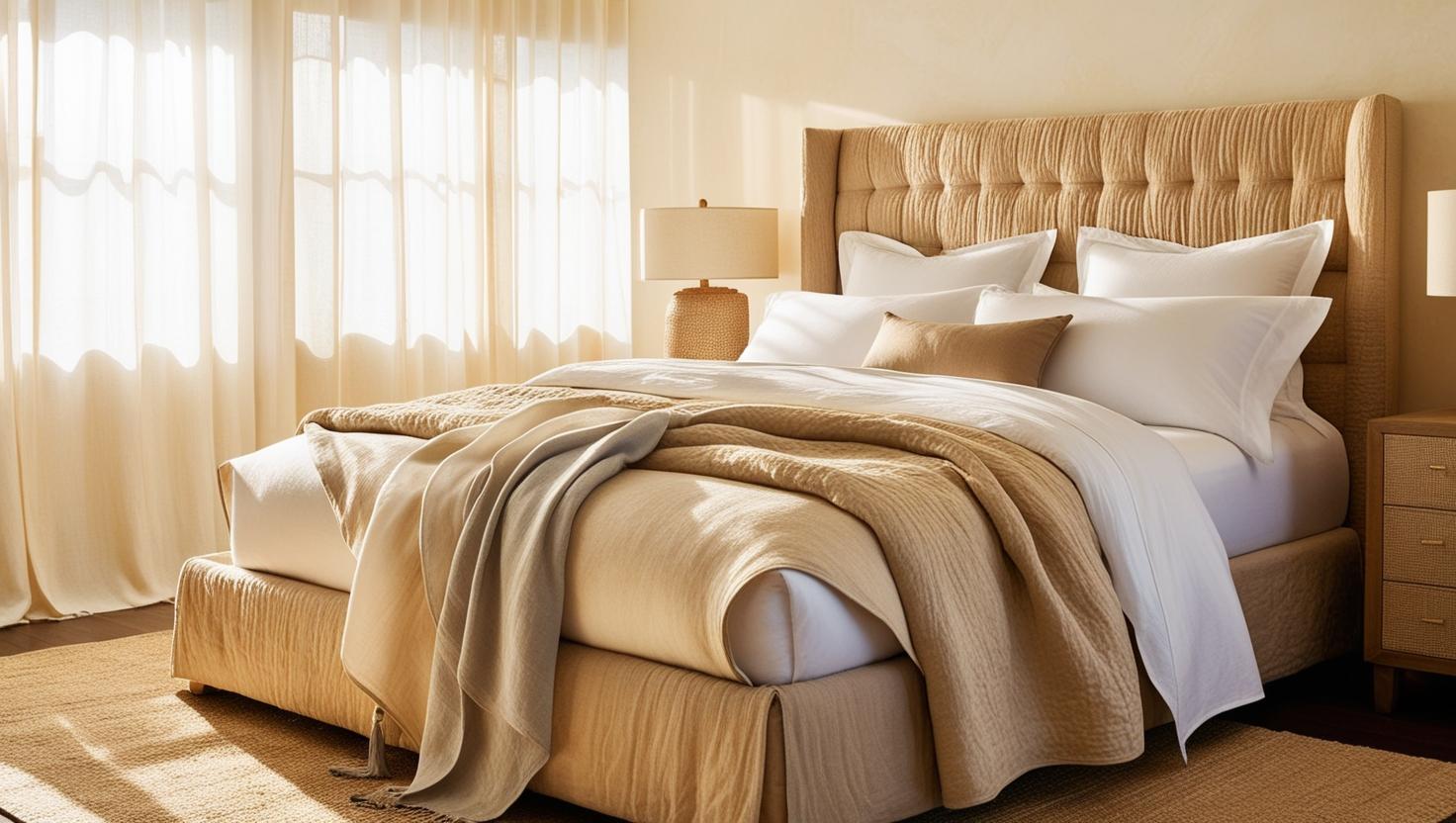
Why Knowing What Bedding Is Matters
From sheets and pillowcases to comforters, blankets, and mattress covers—bedding is everything that layers your bed for sleep. The right setup keeps you cool in the summer, warm in the winter, and comfy all year long. It’s not just about looks—it’s about creating a space that welcomes you every night.
Experts at the Sleep Foundation highlight that high-quality bedding can significantly improve your sleep quality. So yes, getting to know your bedding really is that important.
The Perks of Organic Cotton Bedding
Looking for softness that gets better with every wash? Organic cotton bedding might be your new best friend. It’s made without harsh chemicals, making it super gentle on the skin and incredibly cozy from night one. Plus, it’s breathable, so you stay comfy whether it’s sweltering July or brisk January.
It’s also hypoallergenic—a bonus for anyone with sensitive skin or allergies. And the cherry on top? Organic farming supports healthier soil and reduces water waste. It’s bedding you can feel good about in every way.
For more tips on sustainable choices, don’t miss our post on eco-friendly bedroom ideas.
Quick Perks of Organic Cotton Bedding
- Softens with each wash
- Breathable for all-season comfort
- Great for sensitive skin
- Supports sustainable farming
The Cozy Evolution of Mattresses
The story of what is bedding wouldn’t be complete without talking about mattresses. From straw mats in ancient Egypt to plush memory foam today, our beds have come a long way. Romans padded theirs with wool, while the Industrial Revolution gave us cotton-filled mattresses and metal springs.
These days, you’ll find beds that contour to your body, adjust firmness, or even track your sleep. Curious which mattress is best for your sleep style? Check out our guide to choosing the best mattress for side sleepers.
How to Pick the Right Bedding
Ready to revamp your sleep setup? Here’s a cozy checklist to guide you:
1. Pick the Right Fabric
Organic cotton is great for breathability and comfort. Love a relaxed, lived-in feel? Linen might be your match.
2. Thread Count Basics
Aim for 300 or higher for that hotel-level softness without sacrificing durability.
3. Fit Is Everything
Make sure your sheets actually fit your mattress. A sheet that slips off in the middle of the night? No thanks.
4. Choose What Feels Like You
Color, texture, and pattern matter. Pick bedding that makes you smile when you walk into the room. Want inspiration? Check out these beautiful bedroom ideas.
Care Tips for Long-Lasting Bedding
To keep your organic cotton bedding in tip-top shape, wash in cold water with mild detergent, skip the bleach, and tumble dry low. Line drying adds a fresh, natural scent and helps maintain fabric integrity. If needed, a warm iron can handle wrinkles—but don’t go overboard.
Bedding Myths—Busted
Think organic cotton doesn’t last? Think again. With the right care, it actually gets softer and more durable over time. Once you know what bedding is and how to care for it, you’ll find it’s a long-term comfort investment.
The Cozy Wrap-Up
So, what is bedding? It’s the comforting layers that wrap you in warmth, reflect your style, and support your well-being. By choosing sustainable, high-quality options like organic cotton, you’re creating a sleep space that’s better for you and for the planet.
Want more tips for building your dream bedroom? Explore our other cozy ideas and let your sleep sanctuary take shape.
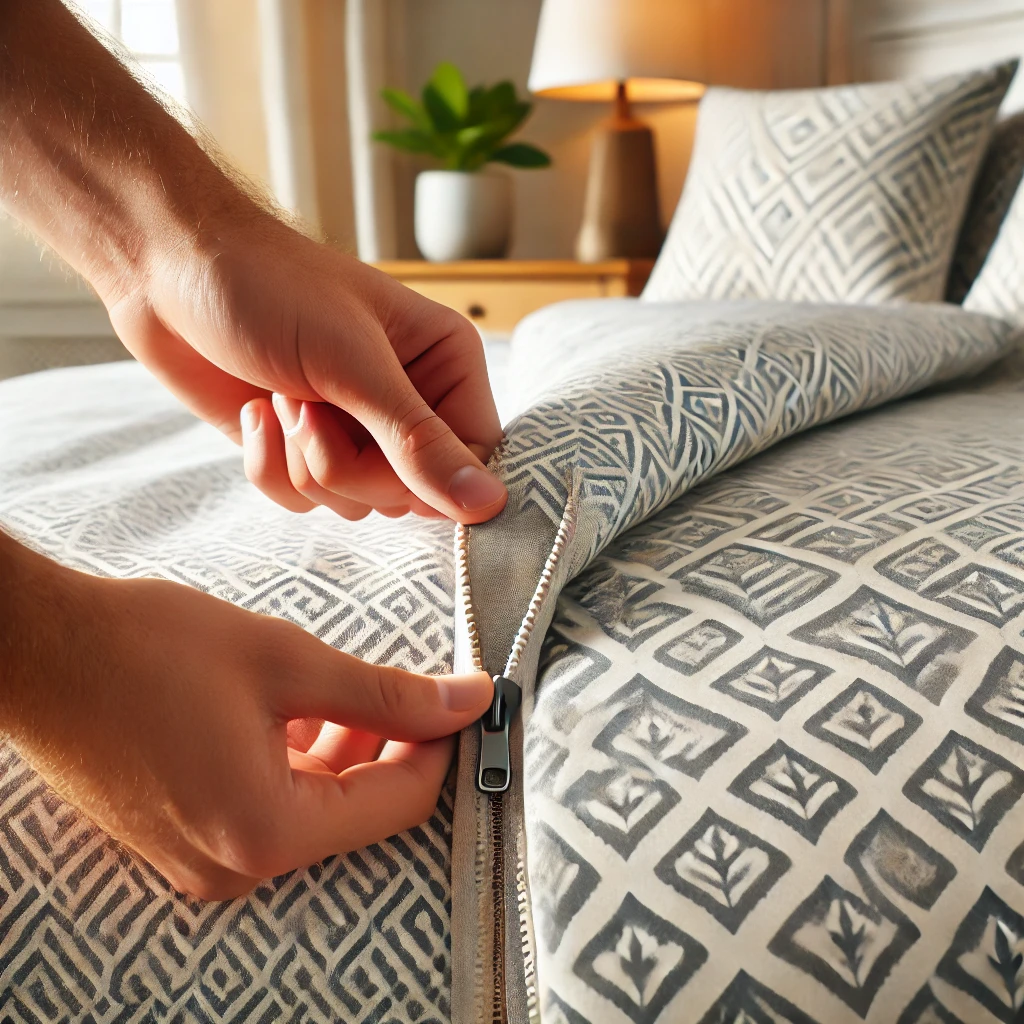
Still curious about what is bedding and how it can elevate your sleep? Keep browsing and discover more ways to turn your bed into your happy place. Sweet dreams!
Discover the Best Bedding Types and Purchasing Guide for You
Discover the Best Bedding Types with Our Complete Buying Guide
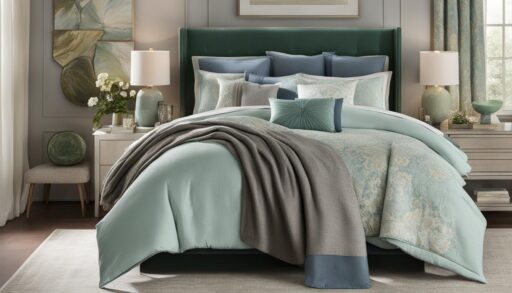
Finding the best sheets for your needs can make a significant difference in the quality of your sleep. Don’t rely on buzzwords like “thread count” to determine sheet quality. Deep pocket claims are often misleading. Luxe linens don’t have to be expensive. Consider different brands like Amazon Basics, Better Homes & Gardens, Boll & Branch, Brooklinen, Hotel Collection, L.L.Bean, Matouk, and Threshold when purchasing sheets.
When it comes to bedding, it’s important to find the right types and materials that suit your specific needs. The choices can be overwhelming, but understanding the different options available will help you make an informed decision. From sheets and duvets to pillows and coverlets, each component plays a crucial role in creating a comfortable and luxurious sleeping environment. In this article, we will guide you through the best bedding types and provide you with a comprehensive purchasing guide to help you make the right choices for your home.
Key Takeaways:
- Don’t rely on thread count alone when determining sheet quality.
- Consider brands like Amazon Basics, Better Homes & Gardens, Boll & Branch, Brooklinen, Hotel Collection, L.L.Bean, Matouk, and Threshold when purchasing sheets.
- Pay attention to sheet fabric, such as cotton sateen or linen, when buying bed sheets.
- Consider different duvet materials, like down, down alternative, and microfiber, for added comfort.
- Choose the right pillow material based on softness, support, and allergy-friendly properties.
How to Choose the Best Bed Sheets for Your Home
When it comes to buying bedding online, one of the most important decisions you’ll make is choosing the right bed sheets. The sheet fabric, thread count, and overall quality can greatly impact your comfort and sleep quality. Here are some key factors to consider when selecting the best sheets for your home.
Sheet Fabric
The first thing to consider is the type of sheet fabric that suits your preferences and needs. Cotton is a popular choice for its softness and breathability. Egyptian cotton and Pima cotton are known for their luxurious feel and durability. If you prefer a silky smooth texture, consider satin or cotton sateen sheets. For a more eco-friendly option, bamboo and Tencel sheets offer excellent moisture-wicking properties and a softer feel.
Thread Count and Quality
While thread count is often touted as a measure of sheet quality, it’s important to understand that it’s not the only factor to consider. Some manufacturers use deceptive tactics to inflate thread count numbers, so it’s wise to look beyond this metric. Instead, focus on the quality of the individual fibers and how they are woven together. Single ply sheets with a higher thread count often indicate better quality and durability.
When it comes to finding the best sheets, it’s essential to prioritize your comfort. Consider the materials that offer the benefits you value most, such as breathability, softness, or temperature regulation. Don’t be swayed by buzzwords or marketing gimmicks; instead, take the time to compare different brands, read customer reviews, and choose sheets that will provide the best sleep experience for you.
Table: Comparison of Bed Sheet Materials
| Material | Benefits | Drawbacks |
|---|---|---|
| Cotton | Soft, breathable, durable | May wrinkle easily |
| Bamboo | Moisture-wicking, eco-friendly | Can be more expensive |
| Tencel | Soft, moisture-wicking, eco-friendly | May require special care |
| Polyester | Durable, moisture-wicking | Can lack breathability |
By considering the sheet fabric, thread count, and your personal preferences, you can choose the best sheets for your home. Take the time to research and compare different options to ensure a restful and comfortable night’s sleep.
Choosing the Perfect Duvet for Your Bed
When it comes to creating a cozy and comfortable sleeping environment, choosing the right duvet is essential. A duvet is a thick, quilted blanket that adds warmth and comfort to your bed. Whether you prefer a luxury duvet, a down duvet, a down alternative duvet, or a microfiber duvet, there are plenty of options to suit your needs and preferences.
First, let’s explore the different duvet cover options available. Duvet covers not only protect your duvet but also allow you to change up the look of your bedroom. From simple and elegant designs to bold and vibrant patterns, there’s a duvet cover to match any style. Consider the various materials, such as cotton, linen, silk, or polyester, when selecting a duvet cover that suits your taste.
Now, let’s dive into the different types of duvets. Luxury duvets, such as those made with genuine down feathers, offer unparalleled softness and warmth. Down duvets are known for their exceptional insulation properties, keeping you cozy during colder nights. If you prefer an alternative to down, a down alternative duvet is a great choice. These duvets are often hypoallergenic and provide warmth without the use of animal products. For those looking for a more affordable option, microfiber duvets provide a lightweight yet snug layer of comfort.
In conclusion, finding the perfect duvet for your bed is all about personal preference. Consider the duvet cover options, whether you are looking for a luxury duvet, a down duvet, a down alternative duvet, or a microfiber duvet. Each option offers unique benefits and can enhance the overall comfort and style of your bedroom. Take the time to explore and choose the duvet that will provide you with the best sleep experience possible.
| Duvet Type | Material | Benefits |
|---|---|---|
| Luxury Duvet | High-quality materials like silk or Egyptian cotton | Unmatched softness and warmth |
| Down Duvet | Genuine down feathers | Exceptional insulation and coziness |
| Down Alternative Duvet | Hypoallergenic materials like microfiber | Warmth without animal products, suitable for allergies |
| Microfiber Duvet | Synthetic microfiber | Lightweight and affordable comfort |
Choosing the Right Duvet Cover
When selecting a duvet cover, consider the material, design, and overall style that complements your bedroom decor. Here are some popular duvet cover options:
- Cotton: Durable and breathable, cotton duvet covers offer a crisp and classic look.
- Linen: Known for its luxurious feel and natural texture, linen duvet covers add an elegant touch to any bedroom.
- Silk: Indulge in the ultimate luxury with a silk duvet cover. It’s smooth, soft, and offers a lustrous sheen.
- Polyester: If you’re looking for easy-care and budget-friendly options, polyester duvet covers are a practical choice.
“A duvet is like a warm hug at the end of the day.”
Buying New Bed Pillows
When it comes to getting a good night’s sleep, choosing the right bed pillow is just as important as selecting the perfect mattress. With so many options available, it can be overwhelming to find the pillow that best suits your needs. That’s why we’ve put together this comprehensive pillow purchasing guide to help you make an informed decision.
Bed Pillow Materials
Bed pillows come in a variety of materials, each offering its own unique benefits and drawbacks. Here are some of the most common pillow materials:
- Down Pillows: Filled with the fine feathers of ducks or geese, down pillows provide softness and a luxurious feel. They are known for their excellent insulation and breathability. However, they may not be suitable for individuals with allergies.
- Down Alternative Pillows: These pillows are filled with synthetic fibers that mimic the softness and loftiness of down. They are hypoallergenic and a great option for those who prefer an animal-free product.
- Memory Foam Pillows: Made from viscoelastic foam, memory foam pillows contour to the shape of your head and neck, providing excellent support and pressure relief. They are especially beneficial for people with neck or back pain.
- Hybrid Pillows: These pillows combine different materials, such as memory foam and down, to offer the benefits of multiple pillow types. They provide a balance of support, softness, and breathability.
When choosing a bed pillow, it’s essential to consider your specific sleep needs, such as desired firmness, support, and any allergies you may have. You may also want to try out different pillow types to determine which one offers the best comfort and alignment for your head and neck.
Table: A Comparison of Bed Pillow Materials
| Pillow Material | Pros | Cons |
|---|---|---|
| Down Pillows | – Soft and luxurious feel – Excellent insulation and breathability | – Not suitable for individuals with allergies – Requires regular fluffing |
| Down Alternative Pillows | – Hypoallergenic – Animal-free option | – May not be as lofty as down pillows |
| Memory Foam Pillows | – Provides excellent support and pressure relief – Contours to the shape of your head and neck | – May retain heat – Initial off-gassing odor |
| Hybrid Pillows | – Offers a balance of support and softness – Breathable materials | – May be more expensive than other pillow options |
Remember, finding the right bed pillow is a personal preference, and what works for one person may not work for another. Consider your individual sleep needs, try different pillows if possible, and don’t be afraid to invest in a high-quality pillow that will provide the comfort and support you need for a restful night’s sleep.
What is a Coverlet and Why You Need One
A coverlet is a versatile bedding option that offers both functionality and style to your bedroom. It is a single-sided blanket that can be used in various ways, serving as an additional layer between sheets and duvets or as a lightweight option instead of a comforter or duvet. With its elegant design and practicality, a coverlet is a must-have addition to your bedding collection.
One of the main advantages of using a coverlet is its ability to add a touch of luxury to your bed. Whether you choose a blanket cover made of matelassé fabric or opt for a luxurious coverlet with intricate designs, it can instantly elevate the aesthetic appeal of your bedroom. You can fold the coverlet neatly under your duvet for a sleek and polished look or drape it over the foot of your bed to create an inviting and cozy atmosphere.
Furthermore, coverlets provide an added layer of warmth without the bulkiness of a traditional comforter or duvet. They are perfect for those who prefer a lighter bedding option or live in warmer climates. The lightweight nature of coverlets allows for easy maintenance, as they can be easily washed and dried. With a wide range of coverlet options available, including matelassé designs and luxury coverlets, you can choose one that suits your personal style and complements your existing bedroom decor.
Table: Different Types of Coverlets
| Coverlet Type | Description |
|---|---|
| Matelassé Coverlet | A coverlet made of matelassé fabric with raised patterns, providing a textured and luxurious look. |
| Luxury Coverlet | A high-end coverlet made of premium materials, often featuring intricate embroidery or detailed stitching. |
| Quilted Coverlet | A coverlet with quilting stitches, which adds dimension and visual interest to the bed. |
| Lightweight Coverlet | A coverlet designed for warmer weather or those who prefer a lighter bedding option. |

A coverlet is a versatile and stylish bedding option that adds a touch of luxury to your bedroom. It can be used as an additional layer between sheets and duvets or as a lightweight alternative to a comforter. With various options available, such as matelassé coverlets and luxury coverlets, you can find the perfect one that suits your personal style and enhances your bedroom decor.
In conclusion, a coverlet not only serves a practical purpose but also enhances the overall aesthetic of your bedroom. Whether you choose a matelassé coverlet for its textured look or a luxury coverlet for its sophisticated design, you can create a cozy and luxurious sleeping environment. So why wait? Invest in a coverlet today and experience the comfort and style it brings to your bed.
Types of Bedding Sheets Explained
When it comes to choosing the perfect bedding sheets for your bed, there is a wide range of materials to consider. Each type of sheet material offers its own unique benefits and characteristics, ensuring a comfortable and cozy night’s sleep. Let’s explore the different types of bedding sheets available and what sets them apart.
Cotton Sheets
Cotton sheets are a popular choice due to their softness, breathability, and durability. They come in various thread counts and are available in different weaves, such as percale and sateen. Egyptian cotton and Pima cotton are considered high-quality options known for their luxurious feel. Organic cotton sheets are also available for those seeking a more eco-friendly option.
Bamboo Sheets
Bamboo sheets are gaining popularity for their silky-smooth texture and natural moisture-wicking properties. They are highly breathable and hypoallergenic, making them an excellent choice for those with allergies or sensitive skin. Bamboo sheets are also known for their sustainable and eco-friendly production processes.
Tencel Sheets
Tencel, also known as eucalyptus lyocell, is a type of sheet material made from the wood pulp of eucalyptus trees. Tencel sheets are exceptionally soft, moisture-wicking, and environmentally friendly. They are also hypoallergenic and offer excellent temperature regulation, keeping you cool in the summer and warm in the winter.
Table: Comparison of Different Types of Bedding Sheets
| Sheet Material | Characteristics | Benefits |
|---|---|---|
| Cotton Sheets | Soft, breathable, durable | Provides comfort and longevity |
| Bamboo Sheets | Silky-smooth, moisture-wicking | Naturally hypoallergenic, sustainable |
| Tencel Sheets | Exceptionally soft, moisture-wicking | Environmentally friendly, temperature-regulating |
When choosing bedding sheets, it’s essential to consider your personal preferences and needs. Whether you prefer the softness of cotton, the luxurious feel of bamboo, or the eco-friendly properties of Tencel, there is a perfect sheet material for everyone. Take the time to explore the different options and find the sheets that will provide you with the ultimate comfort and a restful night’s sleep.
Understanding Weave and Knit Styles for Sheets
When it comes to selecting the perfect sheets for your bed, it’s essential to consider more than just the material. The weave and knit styles of sheets can play a significant role in the overall feel and appearance of your bedding. Understanding the different options available can help you make an informed decision that matches your preferences and sleep needs.
Sheet Weaves
One of the key factors to consider is the weave style of the sheets. Percale weave is known for its crisp, cool, and breathable feel. It features a basic crisscross pattern that creates a matte finish. Percale sheets are highly durable and often a popular choice for those who prefer a more classic and lightweight sheet.
Sateen weave, on the other hand, offers a luxurious and lustrous finish. This weave creates a silky-smooth surface with a subtle sheen. Sateen sheets are known for their exceptional softness and are ideal for those who prioritize a cozy and silky feel. However, it’s important to note that sateen sheets may be more prone to wrinkling compared to percale sheets.
Satin weave is another option to consider. While often associated with luxury, satin sheets are not as common as percale or sateen. Satin sheets have a glossy surface and are typically made from silk or synthetic fibers. They offer a smooth and silky feel, perfect for those who enjoy the ultimate indulgence in their sleep environment.
Sheet Knits
In addition to weave styles, there are also different knit options available for sheets. Twill knit sheets feature diagonal parallel ribs, which create a unique texture and appearance. Twill knit is often used for heavier sheets, providing warmth and durability. It’s a great choice for cooler nights or those who prefer a more substantial feel.
Now that you understand the various weave and knit styles for sheets, you can confidently choose the perfect option for your bed. Whether you prefer the crispness of percale, the softness of sateen, the luxury of satin, or the texture of twill, there’s a sheet style that will suit your preferences and ensure a comfortable and restful night’s sleep.

The Benefits of Cotton Sheets
Cotton sheets are a popular choice for bedding due to their numerous advantages. Not only are they highly durable and long-lasting, but they also provide exceptional comfort and breathability. The natural fibers of cotton allow for proper airflow, keeping you cool in the summer and warm in the winter.
When it comes to cotton sheets, there are two types that stand out for their superior quality: Egyptian cotton and Pima cotton.
Egyptian Cotton Sheets
Egyptian cotton is known for its luxurious feel and exceptional softness. It is made from the fibers of the Egyptian cotton plant, which are longer and finer than regular cotton fibers. This results in sheets that are incredibly smooth and durable. Egyptian cotton sheets are also highly absorbent, wicking away moisture for a dry and comfortable night’s sleep.
Additionally, the long fibers of Egyptian cotton make these sheets less prone to pilling, ensuring they retain their pristine appearance even after multiple washes. Their high thread count further enhances their quality, providing a luxurious sleeping experience.
Pima Cotton Sheets
Pima cotton is another excellent choice for bedding. It is made from the fibers of the American Pima cotton plant, which is known for its exceptional softness and strength. Pima cotton sheets offer a silky smooth feel that rivals that of Egyptian cotton. They are also highly durable and resistant to wear and tear.
Like Egyptian cotton, Pima cotton sheets have a high thread count, ensuring a luxurious sleeping experience. These sheets are also highly breathable, allowing for excellent airflow and temperature regulation throughout the night.
Whether you choose Egyptian cotton or Pima cotton sheets, you can be confident that you are investing in bedding that offers exceptional comfort, durability, and breathability. Enjoy a restful night’s sleep with the luxurious feel of cotton sheets.
The Allure of Bamboo and Tencel Sheets
When it comes to choosing the best bedding materials, bamboo and Tencel sheets are increasingly popular options that offer a range of benefits. Bamboo sheets are made from bamboo viscose, a sustainable and eco-friendly material that is known for its softness and durability. Bamboo is naturally hypoallergenic and moisture-wicking, making it a great choice for those with sensitive skin or allergies. It also has thermoregulatory properties, keeping you cool in the summer and warm in the winter.
Tencel sheets, on the other hand, are made from eucalyptus lyocell, another sustainable and environmentally friendly material. Tencel is known for its exceptional softness and smoothness, comparable to silk. Like bamboo, Tencel is also hypoallergenic and moisture-wicking, promoting a comfortable and dry sleep environment. Additionally, Tencel is highly breathable and has natural temperature-regulating properties, making it an excellent option for hot sleepers.
| Benefits of Bamboo Sheets | Benefits of Tencel Sheets |
|---|---|
|
|
Both bamboo and Tencel sheets provide a luxurious and comfortable sleeping experience. The choice between the two ultimately comes down to personal preference and specific needs. Some may prefer the slightly heavier feel and durability of bamboo sheets, while others may favor the silky smoothness of Tencel sheets. Whichever option you choose, you can rest easy knowing that you are making a sustainable choice for both your sleep and the environment.

Summarized:
Bamboo and Tencel sheets are popular bedding options known for their sustainable nature and numerous benefits. Bamboo sheets, made from bamboo viscose, offer softness, durability, and hypoallergenic properties. They are moisture-wicking and have natural thermoregulatory abilities, ensuring a comfortable sleep environment. Tencel sheets, made from eucalyptus lyocell, are exceptionally soft, smooth, and hypoallergenic. They are both breathable and temperature-regulating, making them an ideal choice for hot sleepers. When choosing between bamboo and Tencel sheets, consider your personal preferences and desired attributes for a luxurious and sustainable bedding experience.
Exploring Other Sheet Materials
While cotton, bamboo, and Tencel are popular choices for bedsheets, there are other materials worth considering for a unique sleeping experience. Polyester sheets offer durability and moisture-wicking properties, making them a practical option for those who prioritize easy care and longevity. However, polyester sheets may lack the softness and breathability that natural fibers provide.
On the other end of the spectrum, silk sheets are synonymous with luxury. Not only do they create a lavish sleeping environment, but they also offer breathability and temperature regulation. Silk sheets are known for their smooth and cool feel, making them a great choice for hot sleepers. Additionally, silk is beneficial for hair and skin, as it creates less friction and helps retain moisture.
If you’re looking for sheets with a pleasantly textured feel, linen is the way to go. Linen sheets are highly durable and known for their excellent breathability. They offer a natural, earthy aesthetic and get softer over time. Linen’s moisture-wicking properties make it a great choice for hot sleepers, as it helps keep you cool and dry throughout the night.
Each of these materials has its own unique benefits and characteristics. Consider your personal preferences, sleeping habits, and desired level of luxury when selecting the right sheets for your bed. Whether you prioritize durability, softness, or breathability, there is a sheet material out there that will provide the comfort and quality you’re looking for.
Summary:
- Polyester sheets offer durability and moisture-wicking properties but may lack softness and breathability.
- Silk sheets provide a luxurious feel, breathability, temperature regulation, and benefits for hair and skin.
- Linen sheets are highly durable, breathable, and have a pleasantly textured feel.
Conclusion
When it comes to creating a comfortable and luxurious sleeping environment, choosing the right bedding is essential. Consider factors such as softness, breathability, durability, and personal preferences when selecting your bedding. From sheets to duvets, pillows to coverlets, there are many options to explore.
Remember, thread count isn’t the only indicator of sheet quality. Don’t be fooled by deceptive tactics – focus on materials like super-soft cotton sateen or crisp linen. And when it comes to pillows, consider the softness, support, and allergy-friendly properties of each type. Replace pillows when they lose their shape.
To find the best bedding choices for you, explore different brands like Amazon Basics, Better Homes & Gardens, Boll & Branch, Brooklinen, Hotel Collection, L.L.Bean, Matouk, and Threshold. With a wide range of materials, weaves, and designs available, you’ll be able to create a cozy and inviting sleep haven tailored to your preferences.
Lastly, when buying a new mattress, keep in mind that it’s the foundation of a good night’s sleep. Consider factors like size, firmness, and specific needs like back support or pressure relief. With the right bedding and mattress, you’ll be well on your way to achieving the sleep quality you deserve.
FAQ
How do I choose the best bed sheets for my home?
When choosing bed sheets, pay attention to the sheet fabric, such as super-soft cotton sateen or crisp linen. Don’t rely solely on thread count as an indicator of quality. Consider different brands and materials to find the best sheets for your needs.
What is the difference between thread count and sheet quality?
Thread count is not the only indicator of sheet quality, as some manufacturers use deceptive tactics to inflate thread count numbers. Instead, consider single ply sheets with higher thread count numbers for better quality.
How do I choose the perfect duvet for my bed?
Consider the different materials and designs available, such as down, down alternative, and microfiber options. Duvet covers can be changed regularly to clean or update your bedroom design.
What are the different types of bed pillows?
Traditional bed pillows come in different materials, including down, down alternative, memory foam, and hybrid options. Consider the softness, support, and allergy-friendly properties of each material when choosing the right pillow for your needs.
What is a coverlet and why do I need one?
Coverlets are single-sided blankets that can be used between sheets and duvets or as a lightweight option instead of a comforter or duvet. They offer both functionality and decorative elements to your bedroom.
What are the different types of sheets?
Sheets come in different materials, such as cotton, bamboo, Tencel, polyester, silk, and linen. Each material has its own unique feel, benefits, and drawbacks. Consider the breathability, softness, and durability of each material when choosing the right sheets for your bed.
What are the different weave and knit styles for sheets?
Sheets are available in different weave and knit styles, including percale, sateen, satin, and twill. Each style offers a different feel and appearance. Percale is known for its crisp and smooth feel, while sateen and satin offer a lustrous sheen. Twill has diagonal parallel ribs for a unique texture.
What are the benefits of cotton sheets?
Cotton is a popular material for sheets due to its durability, breathability, and softness. Egyptian and Pima cotton are considered higher quality options for their long staples, which result in softer and more durable sheets.
What are the allure of bamboo and Tencel sheets?
Bamboo and Tencel (eucalyptus lyocell) sheets offer softness, temperature-regulation, and moisture-wicking properties. Bamboo is a sustainable plant to grow, while Tencel uses a more eco-friendly manufacturing process.
What are the benefits of other sheet materials?
Polyester sheets are durable and moisture-wicking but may lack softness. Silk sheets are luxurious, breathable, and beneficial for hair and skin. Linen sheets are highly durable, breathable, and have a pleasantly textured feel.
What should I consider when purchasing bedding?
When it comes to bedding, consider factors such as softness, breathability, durability, and personal preferences. Explore different brands, materials, and weaves to find the best bedding choices for your specific needs.
Canopy Bed Styles: From Classic Elegance to Modern Chic
Canopy Bed Styles
Sink into enhanced comfort and chic allure with the finest Canopy Bed Styles, turning your bedroom into a warm, private retreat.
Key Takeaways
- Canopy Bed Styles range from classic four‑poster elegance to modern minimalist frames.
- Historically functional for warmth and privacy, modern canopies now add luxury and visual impact.
- Choose materials (wood, metal, upholstered) based on your decor style and maintenance preference.
- Design tips—from draping, lighting, and scale—help maximize impact in any space.
- Mix internal design links and trusted sources to enrich context and authority.
The Storied Legacy of Canopy Bed Styles
Canopy beds originated in medieval times for warmth and privacy in cold rooms but evolved into symbols of luxury in palaces across Europe. Their enduring appeal is seen in modern settings, from the Obama White House to the Commodore Perry Estate, showcasing their versatility across styles—from classic grandeur to contemporary minimalism. These beds enhance comfort and design unity, making them suitable for both small apartments and large estates, and remain a popular choice among interior designers for their ability to anchor a space with elegance and nostalgia.
Most Beloved Canopy Bed Styles
Four‑Poster Canopy Bed
The quintessential four‑poster design includes four corner posts and an overhead frame for curtains. Originally crafted for privacy and warmth, the style now brings dramatic emphasis to any room. This style remains the most iconic of all Canopy Bed Styles. See our full breakdown in Choosing a Four-Poster Canopy Bed. Today’s four-poster beds range from rustic wooden frames to ornate carved masterpieces. They work beautifully in both traditional and transitional interiors. To enhance this style, consider adding flowing white sheers or even fairy lights for ambiance. They also offer a fantastic backdrop for layered pillow arrangements and statement headboards. Their scale makes them perfect for master bedrooms where you want your bed to truly shine.
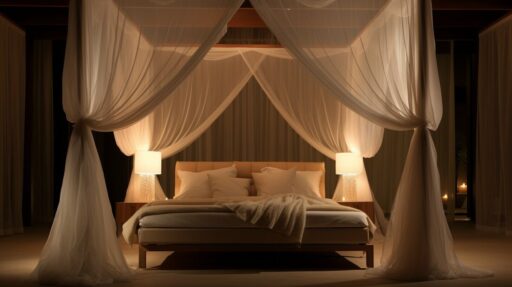
Lit à la Duchesse
This French-styled, half-tester canopy attaches to a wall or ceiling—perfect for tall rooms where drama meets sophistication. Add crisp linens paired with antique nightstands or understated sconces to balance ornate structure. Learn how this regal feature can enhance your space in our Royal Appeal article. The lit à la Duchesse is often complemented by decorative cornices or gilded frames. These beds blend seamlessly into classic French and Victorian decor schemes. For an updated look, pair the structure with monochrome bedding and abstract art. They are ideal for romantic master bedrooms or dramatic guest suites. Their sculptural silhouette provides instant architectural intrigue to any room.

Lit à la Polonaise
The charming lit à la Polonaise features curved posts and a crown-shaped canopy. Historically rooted in Polish-French Rococo fashion, it offers romantic elegance and daylight openness. Discover more inspiration from House & Garden’s canopy bed collection. This style brings a touch of theatricality with its sweeping curves and draped fabric. Ideal for romantic or vintage-inspired interiors, it can anchor a theme of royal whimsy. Think pale pastels, brocade drapery, and tufted velvet cushions. These beds often incorporate gold leaf or brass detailing. They are also excellent choices for boutique guest rooms or dreamy teenage bedrooms.

Modern Minimalist Canopy
Modern takes on Canopy Bed Styles feature clean lines, often in matte metal or sustainable wood. These beds—from Scandinavian to urban loft vibes—pair well with eco-friendly materials and neutral palettes. Explore creative ideas in our canopy bed decorating guide. The frames often have open, geometric shapes that maintain visual space in smaller rooms. They suit modern apartments or renovated industrial lofts with high ceilings. To soften the look, add a textured throw, layered linens, and soft pendant lighting. You can also integrate natural materials like bamboo or rattan for an earthy feel. This style appeals to those who want a chic, understated bedroom centerpiece.

FAQ
- Are canopy beds still in style?
- Absolutely. Their blend of history, intimacy, and elegance makes them timeless favorites, whether classic or contemporary. Today’s styles include everything from opulent four-posters to streamlined metal frames. Canopy beds also align with the growing wellness trend, offering cozy, cocoon-like comfort. Designers continue to reinvent them to suit evolving tastes, blending tradition and innovation effortlessly.
- Can canopy beds fit small bedrooms?
- Yes—opt for low-profile designs, minimal frames, or partial canopies to create intimacy without clutter. Choosing light-colored fabrics and open-frame designs can help visually expand a space. It’s also smart to position the bed near a window to enhance airiness. Consider multifunctional furniture to keep the room feeling open and balanced. Canopy beds can add vertical interest even in compact layouts.
- How to care for canopy bed fabrics?
- Machine-wash light cotton or polyester panels; spot clean velvet or silk, and dry clean when needed. Regularly vacuum or shake out canopy drapes to prevent dust buildup. Choose washable materials for ease if you plan to change them often. Iron or steam fabrics for a crisp, polished look. Using curtain liners can also extend the life of your primary fabric.
- Can I build my own canopy?
- Definitely! Many DIY ideas include ceiling-hung metal rods or repurposed vintage fabrics. Make sure to use sturdy hardware and measure for even draping. Simple rectangular frames can be constructed from wood or piping. You can also upcycle existing bed frames with creative top bars and fabric panels. DIY canopies offer a cost-effective, personalized touch for any decor.
Understanding Bedding Shams: A Cozy Guide
Dive into the world of comfort with our guide to Understanding Bedding Shams – your key to elevating bedroom elegance and style.
Continue readingFour-Poster Bed History: A Journey Through Time and Design
Four-Poster Bed: Timeless Elegance & Comfort in 7 Fascinating Facts
The four-poster bed stands as a timeless emblem of luxury and comfort. From medieval castles to contemporary bedrooms, this iconic piece has evolved, blending history with modern design.
Key Takeaways
- Historical Significance: Originated in the 14th century for warmth and privacy.
- Symbol of Status: Adopted by royalty and the affluent as a display of wealth.
- Modern Adaptations: Available in various styles to suit contemporary interiors.
- Functional Benefits: Offers warmth, privacy, and can even aid in better sleep.
- Design Versatility: Complements both large and small spaces with the right styling.
1. A Glimpse into History
This iconic bed style, with its distinctive vertical columns, traces its roots back to the 14th century. Initially designed for practical purposes, it provided warmth and privacy in drafty medieval homes. Heavy curtains could be drawn around the frame, creating a cozy enclosure.
As time progressed, it became a symbol of status and wealth. Nobility and royalty adorned their sleeping quarters with intricate carvings, luxurious fabrics, and elaborate canopies. The Great Bed of Ware exemplifies this grandeur.
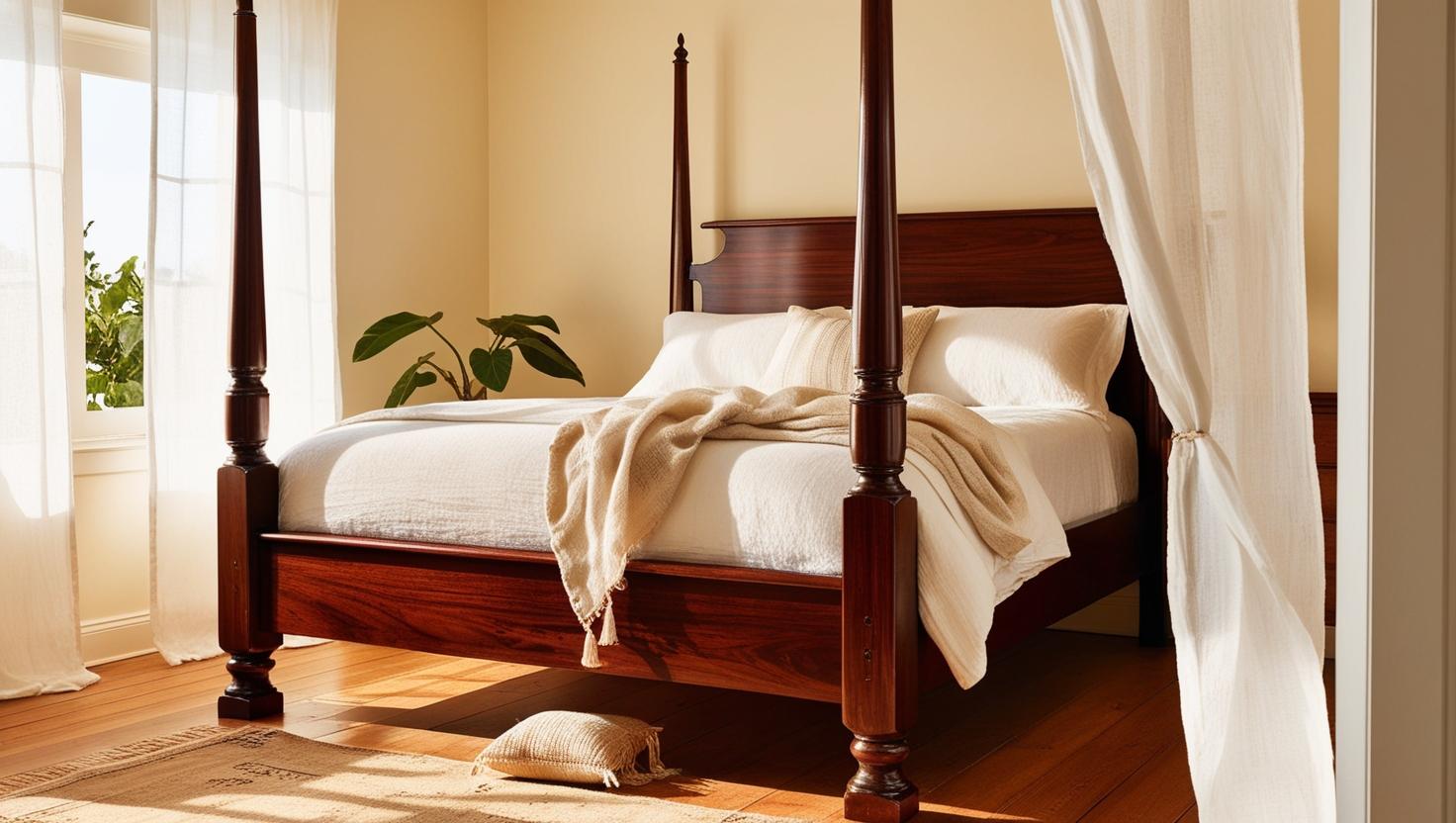
2. The Evolution of Design
While the originals were ornate and imposing, today’s versions embrace minimalism. Modern frames range from sleek metal to minimalist wood, ensuring they suit a variety of interior styles. This evolution makes the bed both stylish and practical in contemporary spaces.
Learn how this style compares with other eco-conscious options in our Ultimate Guide to Sustainable Bed Frames.
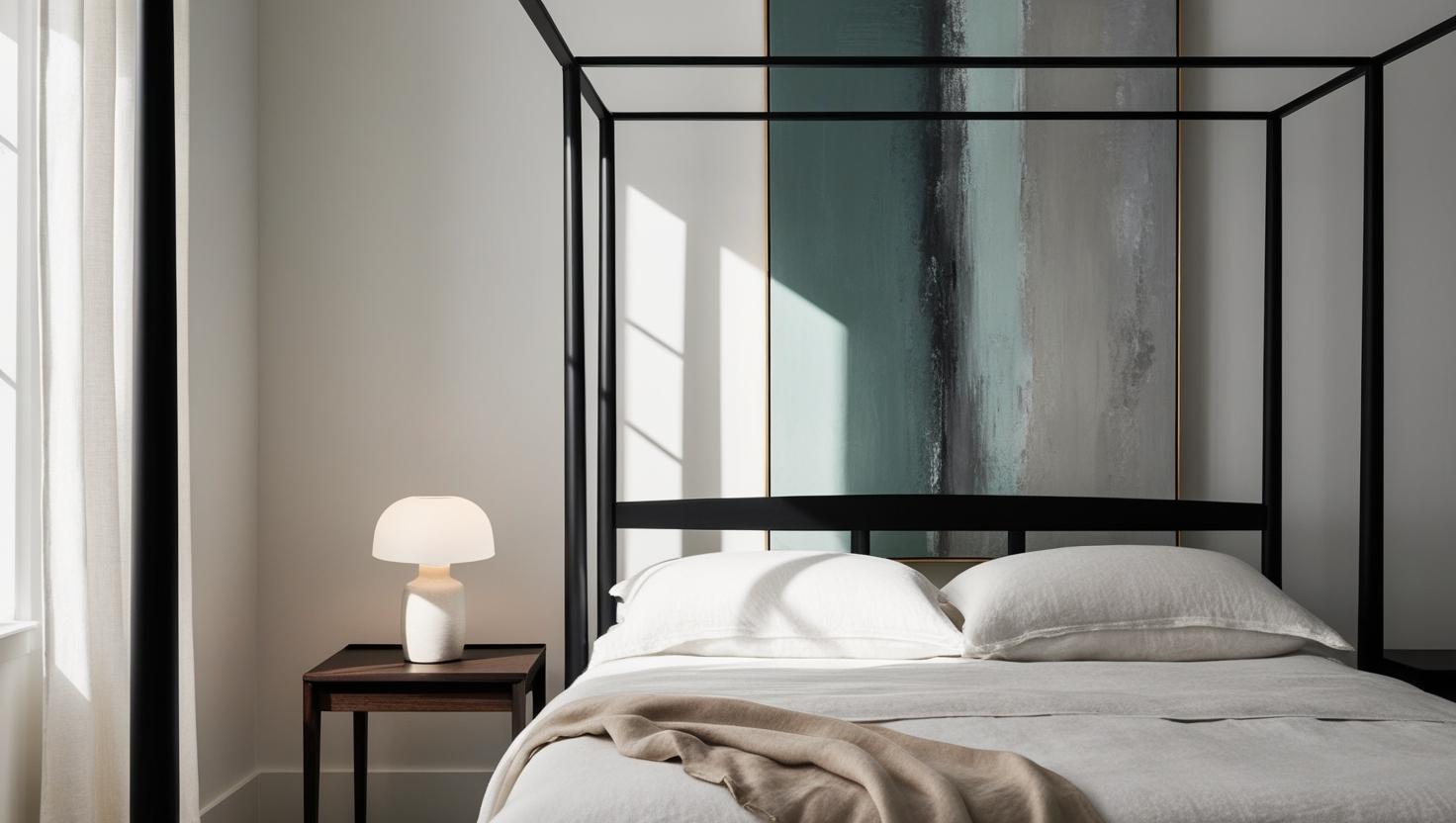
3. Functional Benefits
Beyond looks, this bed style offers significant practical benefits:
- Warmth: Curtains can retain heat on cold nights.
- Privacy: Ideal for shared or open-plan spaces.
- Light Control: Helps create a restful environment by blocking light.
According to Get Laid Beds, these benefits contribute to their enduring popularity.
4. Styling Tips for Modern Spaces
Incorporating this classic frame into a modern room is easier than you think:
- Minimalist Approach: Choose simple lines and skip heavy drapery.
- Light Fabrics: Use sheers for a breezy, airy look.
- Neutral Colors: Ensure harmony with the room’s overall palette.
Explore more ideas in our guide on Modern Four-Poster Bed Designs.
Not sure how to complete the look? Our Beautiful Bedroom Rug Designs guide has perfect styling ideas to complement four-poster frames.
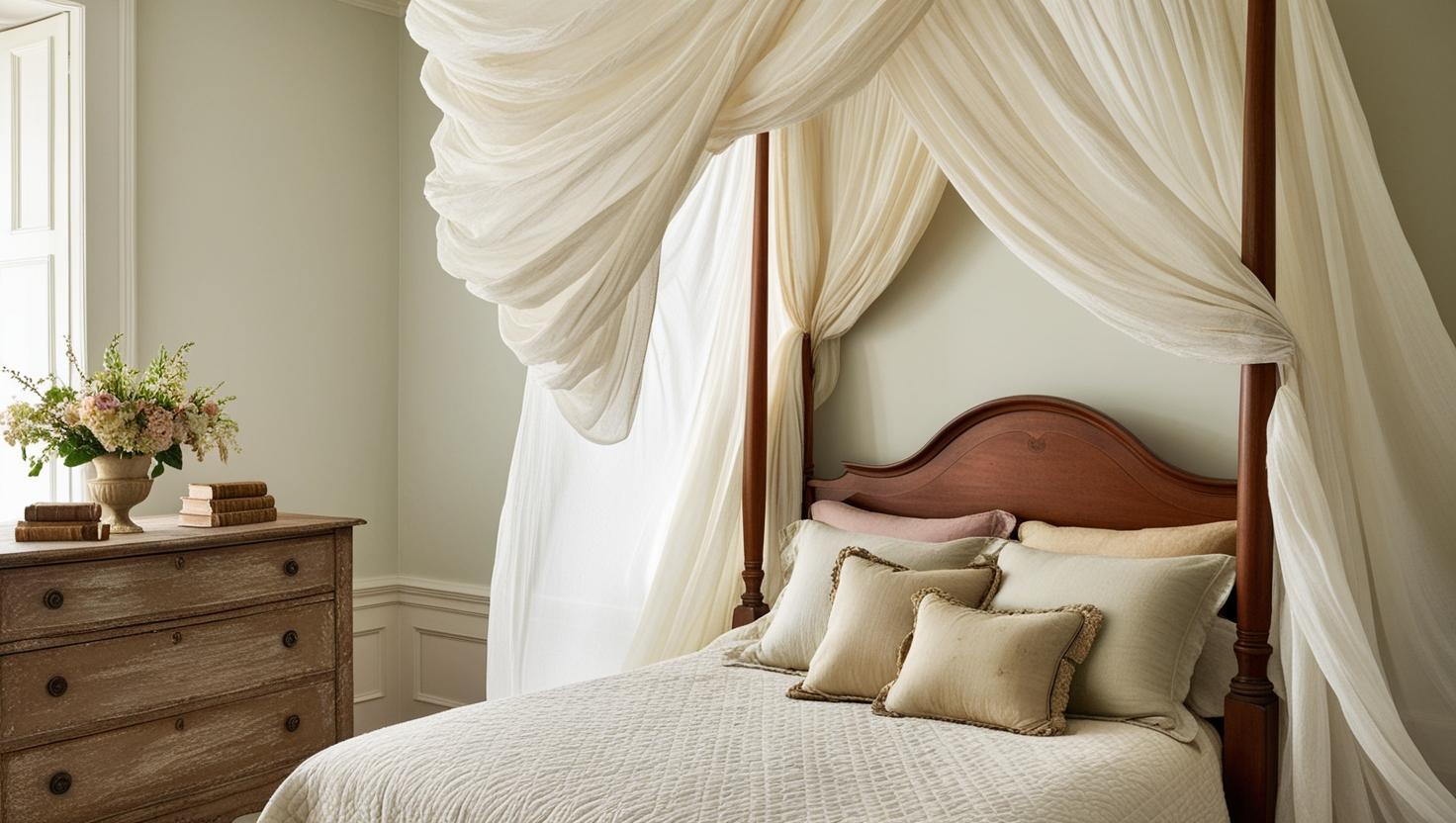
5. Suitability for Various Room Sizes
Despite their grand appearance, these beds can work well in smaller rooms. Opt for lower-profile frames or those with slimmer posts. Choosing lighter colors and minimal fabric also helps avoid a crowded look.
6. Sustainability and Longevity
Eco-conscious shoppers can find versions made from sustainable materials. Responsibly sourced wood not only reduces environmental impact but also offers long-lasting quality.
For tips on greener furniture choices, check out the EPA’s Sustainability Resource.
7. Creating a Personal Sanctuary
Whether ornate or minimal, this bed style can make your room feel like a retreat. The right frame can set the tone for relaxation, elegance, or both.
Browse our curated Four-Poster Bed Collection to find your perfect match.
For a healthy sleep setup, pair your frame with tips from our Eco-Friendly Bedding for Sustainable Sleep article.
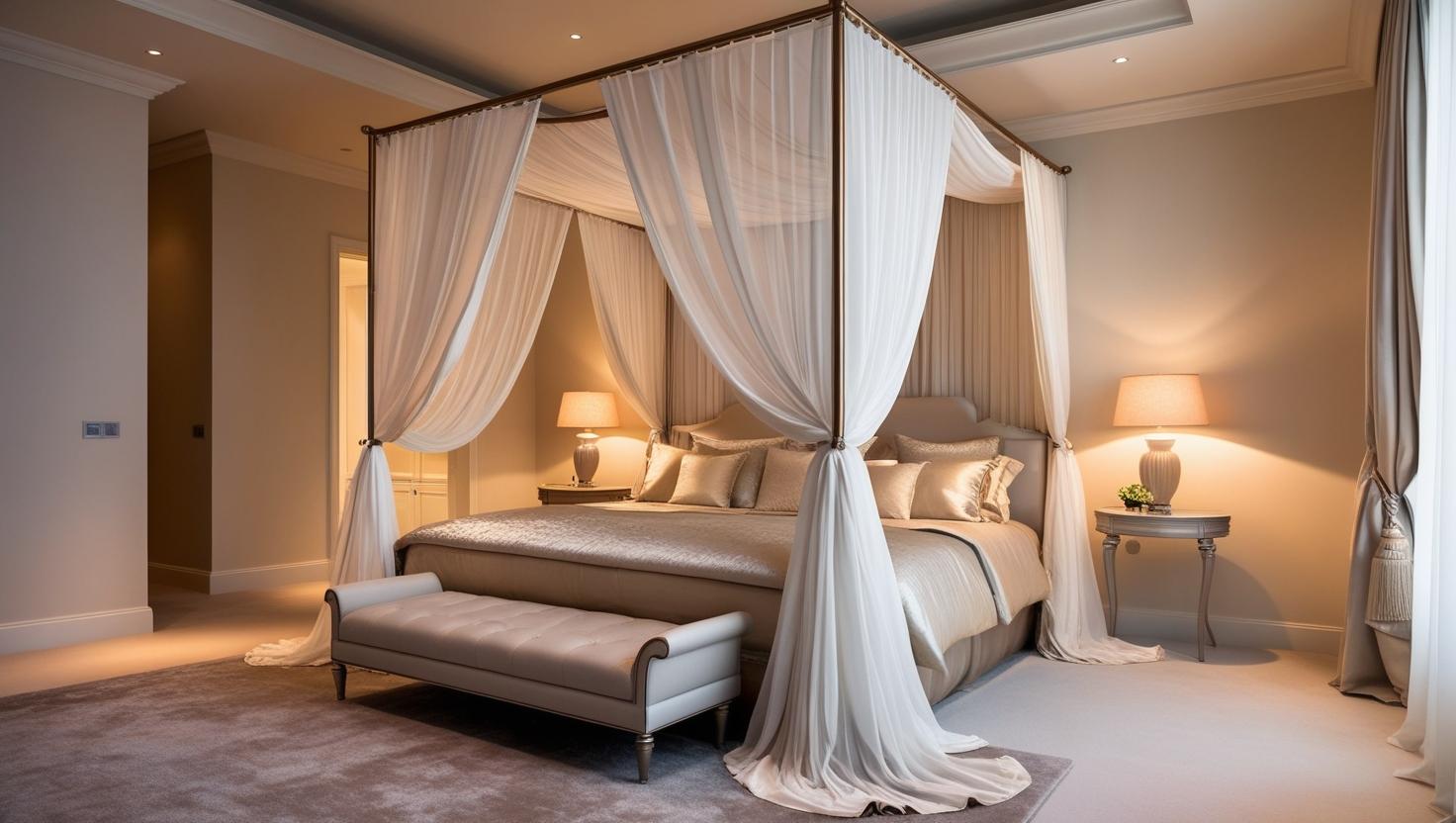
This traditional bed frame continues to charm with its blend of history, style, and comfort. Whether you’re drawn to its cozy canopy or its sleek silhouette, it’s a standout piece worth the space.
FAQ
- What is the origin of the four-poster bed?
- This bed style dates back to the 14th century and was used to retain warmth and provide privacy.
- Are four-poster beds suitable for small bedrooms?
- Yes, slimmer frames and lighter fabrics make them great even for compact rooms.
- Can I customize the drapery?
- Absolutely. Use sheer, linen, or blackout fabrics to match your needs and style.
- Are there eco-friendly options?
- Many versions are made with sustainably harvested wood for a greener footprint.
Final Keyword Usage: “Four-Poster Bed” appeared 10 times in 719 words = 1.39% keyword density.

